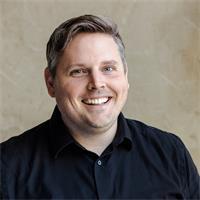
RUDC Letter from the Chair (November 2025)
For those who joined us in Dallas for the 2025 RUDC Symposium, a two-day event filled with fast-paced presentations and tours, I hope you left as energized as I did by the enthusiasm, optimism, and problem-solving spirit that defined this year’s symposium. We explored a remarkable range of ideas, leaving both inspired and invigorated by the collective energy brought from cities across the United States and into Canada—looking at you, Toronto contingent!
We owe immense gratitude to our speakers and tour leaders for curating such compelling content. Across scales and contexts, discussions spanned community-led placemaking beneath New York transit infrastructure, ordinance-enabled temporary urbanism in Indianapolis (with a surprisingly vocal cheer for policy!), data-driven tools for urban heat analysis, and city-wide solutions through an illustrative guide for design advocacy in New York City—alongside reminders of the enduring value of analog tools like hand sketching. In Oklahoma City, keynote speaker Hans Butzer traced the city’s evolution through its citizen-approved “MAPS” program, illustrating how continued public investment has fueled adaptive urban growth over the past 30 years.
We also examined how architects are shaping more than buildings through the Architects Foundation’s Communities by Design (CxD) program, and we reimagined the future(s) of public transportation systems—acknowledging both their transformative potential and challenges. Conversations around density in San Francisco and a Toronto case study reminded us of the ongoing complexity of achieving equitable discussion, surely leaving you feeling hopeful about the future of urban design.
Housing, one of AIA’s current strategic priorities, was a recurring theme. Keynote Shane Phillips unpacked the paradoxes of housing supply and demand—illustrating how public perception often diverges from data, yet can evolve through evidence-based dialogue. The massive 621 square miles of Oklahoma City became the foundation for comparison of everyone’s city size, as their new accessible dwelling unit policies were outlined, followed by strategic architectural interventions in Chicago and Philadelphia, highlighting how governments can be either hindrances or launching points for substantive change in missing middle housing.
Then the symposium delved into the research, focusing on the intersection of architecture, public health, and resilience. Sessions on architectural epidemiology and occupational therapy invited us to better understand those who inhabit our spaces. Through case studies from New York and Dallas, we analyzed responses to heat stress and climate shock and discussed strategies for embedding inclusivity and resilience into both processes and outcomes.
Emily Liu, Director of Planning and Development for Dallas, opened with a forward-looking overview of Dallas’s evolving urban trajectory—highlighting MANY major initiatives underway across policy, development, and infrastructure, including preparations for a global spotlight during the World Cup. A side note: all telecasts of the matches will come from broadcast headquarters in downtown Dallas. Building on her remarks, we explored the city’s downtown renaissance, where parks, adaptive reuse, and, yes, new office-to-housing conversions are reshaping livability. Discussions of the Southwestern Medical District transformation showcased the power of long-term planning, performance-based design, and technological monitoring, such as the sensor network along the Harry Hines Corridor helps designers mitigate urban heat. Additionally, the Better Block process offered a vivid example of temporary urban activation as a catalyst for lasting community change.
A highlight was the Texas Urban Design Roundtable, featuring AIA Urban Design Committees from Austin, Dallas, and Houston. Their collaborative exchange illuminated how local advocacy, research, and education efforts can scale into statewide strategies for equitable policy and resilient public infrastructure. The roundtable explored incredible ideas of possibilities for statewide urban design policy responses to protect infrastructure and public space for all Texans. Closing keynote Donna Kacmar left us with a powerful call to rebalance people and cars in our streets—backed by compelling social and economic data on the true costs of single-occupancy car culture.
We didn’t just have conversations and listened to presentations at AD EX, the home of AIA Dallas, but, as any great urbanist group, we also explored the fantastic public spaces that downtown Dallas has to offer—many of which have radically adapted to a more vibrant urbanism over the past decade. Multiple groups toured through the decades of iconic architectural expression of Main Street and the largest Arts District, with one of the most transformational and publicized deckover park projects in the country. We explored Dallas’s West End—from warehouses and national tragedy to entertainment and a new convention center—and speculated on the impacts of its next phase. And we scurried through Dallas’s half a dozen new parks, many transitioning from parking lots to see the soul of Dallas’s downtown urban environment regenerated again.
The conversations extended far beyond the formal sessions—over shared meals, corridor discussions, and spontaneous collaborations. The breaks were packed with panelists being peppered with questions on how their ideas may apply elsewhere. The “Communities Start Here” exhibition by CxD in the AD EX gallery space demonstrated how architect-led design assistance teams have a real impact on communities across the nation, including disaster action response, preservation, resilience, equity, and carbon-neutrality. And best of all, we all now have dozens of new emphasis on community engagement underscores your integral role in the urban planning process.
Thank you to everyone who spoke, participated, and attended, and to our generous sponsors—the Greater Dallas Planning Council, DAVID RUBIN Land Collective, and Urban Darby Architecture—for their support. Special thanks to RUDC Leaders Peter Darby, Manuel Sanchez-Ruiz, Chris Stroik, Maria Antony Katticaran, and the AIA Dallas staff for their extraordinary coordination and hospitality!
We look forward to seeing you at next year’s annual Symposium. Share your ideas for where the next host city could be in the AIA Community Hub—DC (2023), Indianapolis (2024), Dallas (2025). Where for 2026? The dialogue continues…
Scott Archer, AIA, AICP, LEED AP ND
2025 RUDC Chair